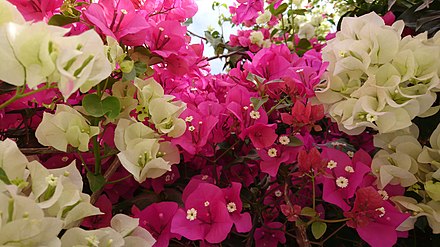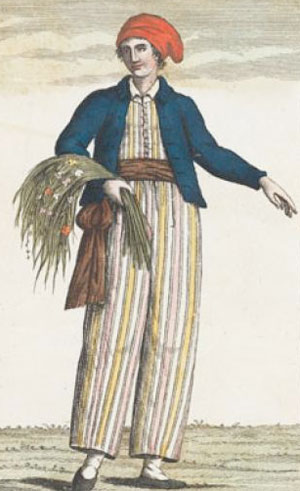umschiffen (G)
circunavegar (p)
circumnavigate (e)
faire le tour du monde (f)
circumnavigare (i)
port louis, mauritius
So, we talked about circumnavigation in an earlier post using the word dog. Remember, circumnavigate is a fancy word for going around, especially by water, and circumnavigating the globe by ship is essentially following various degrees of latitude east or west until you arrive back at the place from which you started. Surprisingly, when your host watched the Opening Ceremonies of the Paris 2024 Olympic Games this past July, the topic of circumnavigation came up. During the ceremony, while the French national anthem, “La Marseillaise”, was performed by opera singer Axelle Saint-Cirel from the rooftop of the Grand Palais, which overlooks the Seine River, 10 gilded statues of notable French women rose from the waters of the Seine River. One of those statutes depicted Jeanne Barret. And who was she? The first woman known to have circumnavigated the globe.
Jeanne Barret was born in 1740 in rural France. She became the housekeeper to a naturalist/botanist named Philibert Commerson. It appears they were also romantically involved and may have had a child together. In 1767, King Louis XV of France funded a round-the-world expedition (otherwise known as a circumnavigation) with a man named Louis de Bougainville at its head. For you gardeners out there, the plant known as bougainville is named after him.

Two ships, the frigate Boudeuse and the supply ship Etoile, were assigned to the expedition. Philibert Commerson was given the role of expedition botanist directly by King Louis XV with the right to his own cabin on board Etoile and a personal assistant. And who did Philibert Commerson bring as his assistant? None other than Jeanne Barret. In February 1767, Commerson and Jeanne Baret boarded the Etoile in Rochefort, France and set out on their journey. During the voyage, Commerson and Jeanne collected thousands of plant specimens. The expedition reached Tahiti in April 1768. There, the Tahitians pointed out that Jeanne was a woman and she admitted as much to Bougainville, albeit with some untruths to protect Commerson as it was a violation of French naval rules to bring a woman on board naval ships. Here is what Bougainville wrote in his journal:
For some time there was a report in both ships, that the servant of M de Commerçon, named Baret, was a woman. His shape, voice, beardless chin, and scrupulous attention of not changing his linen or making the natural discharges in the presence of anyone, besides several other signs, had given rise to, and kept up this suspicion. But how was it possible to discover the woman in the indefatigable Baret, who was already an expert botanist, had followed his master in all his botanical walks, amidst the snows and frozen mountains of the Strait of Magellan, and had even on such troublesome excursions carried provisions, arms, and herbals, with so much courage and strength, that the naturalist had called him his beast of burden?
A scene which passed at Tahiti changed this suspicion in to certainty. M de Commerçon went on shore to botanise there; Baret had hardly set his feet on shore with the herbal under his arm, when the men of Tahiti surrounded him, cried out, It is a woman, and wanted to give her the honours customary on the isle. The Chevalier de Bournand, who was upon guard on shore, was obliged to come to her assistance, and escort her to the boat. After that period it was difficult to prevent the sailors from alarming her modesty. When I came on board the Etoile, Baret, with her face bathed in tears, owned to me that she was a woman; she said that she had deceived her master in Rochefort, by offering to serve him in men’s clothes at the very moment he was embarking; that she had already before served a Geneva gentleman at Paris, in quality of a valet; that being born in Burgundy, and become an orphan, the loss of a law-suit had brought her to a distressed situation, and inspired her with the resolution to disguise her sex; that she well knew when she embarked that we were going round the world, and that such a voyage had raised her curiosity.
She will be the first woman that ever made it, and I must do her the justice to affirm that she has always behaved on board with the most scrupulous modesty. She is neither ugly nor handsome, and is no more than twenty-six or twenty-seven years of age. It must be owned, that if the two ships had been wrecked on any desert isle in the ocean, Baret’s fate would have been a very singular one.
Commerson and Jeanne set out on the Etoile again from Tahiti but disembarked when the expedition reached French territory, the island of Mauritius in 1768. They lived in Port Louis, Mauritius until Commerson died in March 1773, continuing to collect botanical specimens. Although there are reports that she was poor when Commerson died, additional research appears to show that Jeanne had bought a license to run a bar near the port and was running a profitable business. When she married a soldier in a French colonial regiment, she brought more wealth to the marriage than he. Jeanne returned to France in 1775, finally completing her circumnavigation. She settled in the Dordogne and purchased various properties. Ten years later, she was awarded a pension from the French navy for her courage on the expedition. She died in 1807 at the age of 67.
